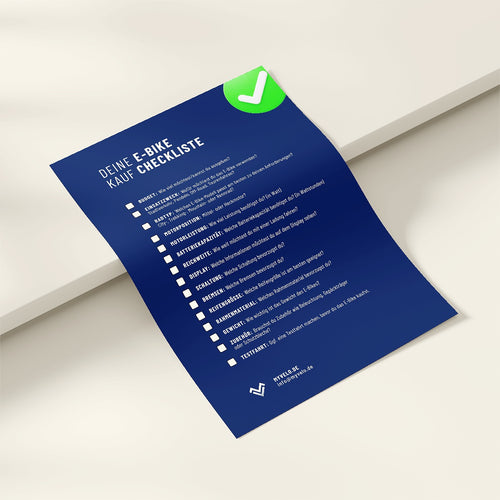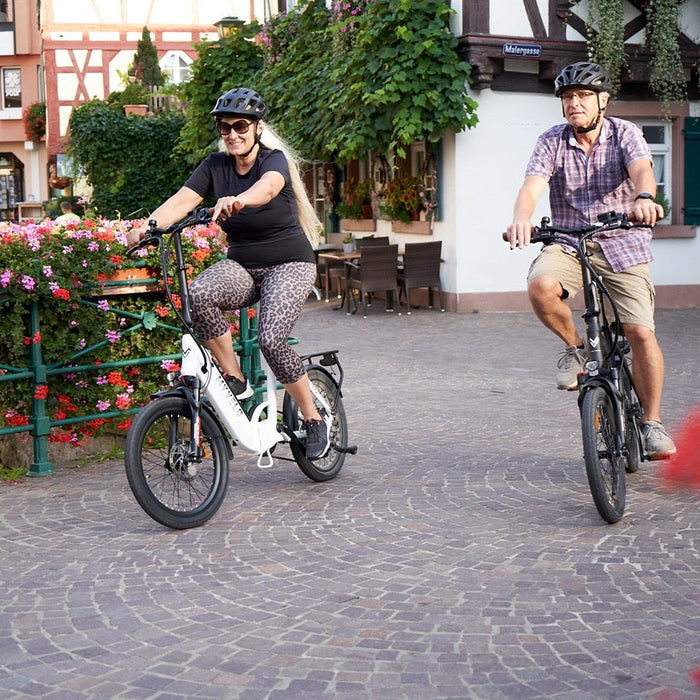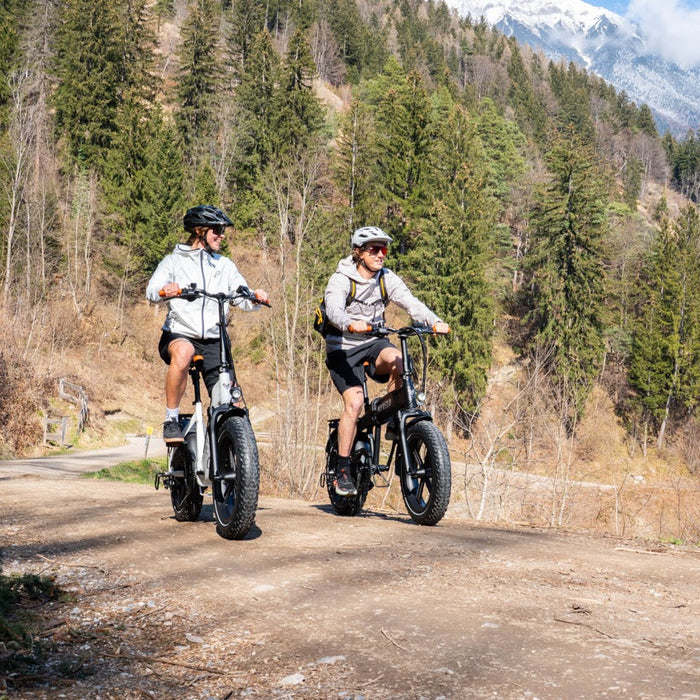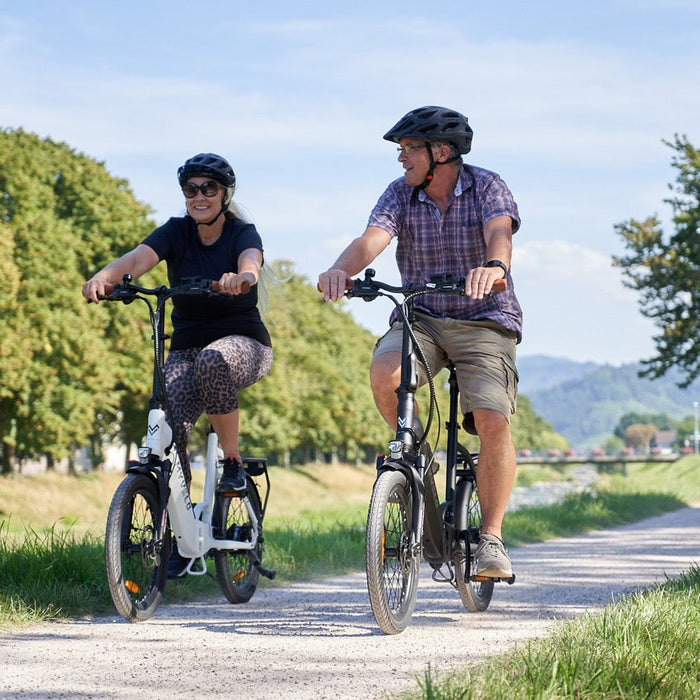

The Fatbike: Your ultimate guide to the fat tires
Von Vincent Augustin |
5 minutes read time
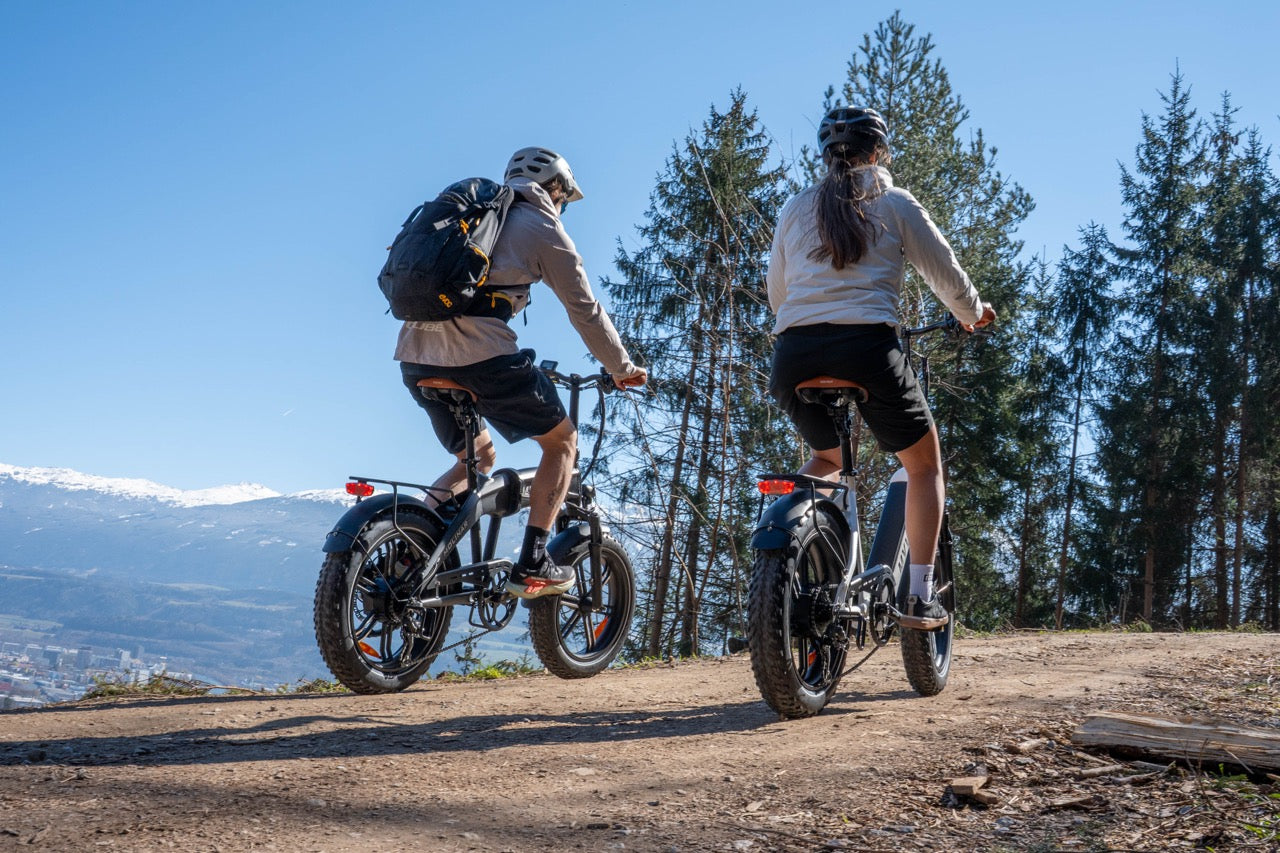
What is a fat bike?
A fat bike is a bicycle with extra-wide tires, typically between 3.8 and 5 inches wide. These wide tires allow the fat bike to ride on soft surfaces such as snow, sand, or mud, where regular bikes would struggle to find traction.
The most important features of a fat bike

1. Wide tires
The tires of a fat bike are its most striking feature. Not only are they wider, but they also have a lower air pressure, which allows them to adapt to uneven terrain and have a larger contact area with the ground. This means they offer better grip and more comfort on rough terrain.
The MYVELO fat bikes are fitted with high-quality tires from Kenda .
2. Frame and fork
The frame and fork of a fat bike are designed to accommodate the wide tires. This means that the frame is usually wider and has a special geometry that ensures stability and comfort.
3. Drive and transmission
Fat bikes often come with special drivetrains optimized for riding in difficult conditions. This often means a wider range of gears to allow for effective riding in both deep snow and steep climbs.
Tip: The MYVELO fat bikes are equipped with powerful Bafang rear motors .
4. Weight
Although fat bikes can be heavier than regular mountain bikes due to their robust construction and wide tires , there are now many models that are equipped with lightweight materials such as aluminum or carbon to reduce weight.
Advantages of a bike with thick tires
1. Versatility
Fat bikes are incredibly versatile and can be used in a variety of environments, from snow-covered trails to sandy beaches, making them a great choice for adventurers who aren't afraid to go off the beaten track.
2. Comfort
Thanks to the wide tires and low air pressure, fat bikes offer a very comfortable ride as the tires effectively absorb shocks and bumps. This can be particularly beneficial on long rides or on rough terrain.
3. Traction
The wide tires provide excellent traction on slippery or loose surfaces, meaning you can ride in conditions that would be impassable for normal bikes.
4. Stability
The larger contact area of the tires provides increased stability, which can be particularly beneficial for beginners or riders who feel unsure on difficult terrain.
Comparison with other bicycle types

Fatbike vs. Mountain Bike
Mountain bikes are designed for versatile off-road riding and offer a good balance of lightness, stability and traction. They typically have narrower tires and are often lighter than fat bikes. While mountain bikes are good for trails and rough terrain, they don't offer the same traction and stability as a fat bike on extremely soft or loose surfaces.
Fatbike vs. Gravel Bike
Gravel bikes specialize in gravel trails and light off-road terrain. They have narrower tires than fat bikes, but are wider than road tires, allowing them to ride on a variety of terrain. Gravel bikes are lighter and faster on paved trails than fat bikes, but don't offer the same versatility in extreme conditions like snow or sand.
Fatbike vs. E-Bike
E-bikes come in many forms, including mountain bikes, gravel bikes, and even fat bikes. An electric motor assists you as you pedal, making it easier to ride on hilly terrain or long distances. An e-fat bike combines the benefits of a fat bike with the assistance of a motor, making it even more versatile. However, without a motor, a regular fat bike could be more strenuous to ride, especially on longer distances or steep climbs.
Areas of application of a fat bike
1st snow
Fat bikes were originally designed to ride in snowy conditions. The wide tires and low air pressure provide excellent traction and stability on snow, making them ideal for winter riding.
2. Sand
If you want to ride on the beach, a fat bike is the best choice. The wide tires distribute the weight and prevent you from sinking into the sand, so you can cruise along the beach with ease.
3. Mud
Fat bikes are also great for muddy conditions. The wide contact area of the tires provides better grip and prevents the bike from digging into the mud.
4. Mountains and trails
Even on rocky and uneven trails, fat bikes offer a lot of comfort and stability thanks to their wide tires and robust construction. They allow you to tackle difficult terrain with ease.
What you should pay attention to when buying a fat bike
1. Tire size
Tire size is one of the most important criteria when buying a fat bike. Think about the terrain you mainly want to ride on and choose the right tire size accordingly.
2. Frame material
The frame material affects the weight and robustness of the bike. Aluminum and carbon are popular materials for lighter fat bikes, while steel frames are often more durable.
3. Drive and transmission
Make sure the fat bike has a sufficient range of gears to be able to ride effectively in different conditions. A good drive is especially important if you want to ride on hilly terrain or difficult surfaces.
4th prize
Fat bikes come in different price ranges. Consider how much you are willing to invest and compare different models and brands to find the best value for money.
Care and maintenance of a fat bike
1. Tire pressure
Tire pressure is especially important on a fat bike. Make sure to maintain the correct air pressure to ensure the best possible traction and stability. Typically, tire pressure on fat bikes is between 5 and 15 PSI, depending on the conditions.
2. Cleaning
After riding in muddy or sandy conditions, it is important to clean your fat bike thoroughly to avoid damage from dirt and debris. Pay particular attention to the chain and gears.
3rd inspection
Regular inspections and maintenance are important to ensure that all components of your fat bike are in perfect condition. Regularly check the brakes, gears and tires for wear and damage.
Summary
Fat bikes are a fantastic choice for anyone looking for a versatile and robust bike that can be used in a wide range of conditions. With their wide tires and special construction, they offer excellent traction and stability on snow, sand and rough terrain. If you're an adventurer and like to ride off the beaten track, a fat bike could be just the thing for you.
Whether you're looking for a new bike for winter rides, beach adventures, or just a comfortable and stable ride, a fat bike offers you all that and more. So what are you waiting for? Grab a fat bike and explore the world in a whole new way!


